Discover 11 hidden attractions, cool sights, and unusual things to do in Decatur (United States). Don't miss out on these must-see attractions: Princess Theatre, Norfolk Southern Tennessee River Bridge, and Celebration Arena. Also, be sure to include Delano Park in your itinerary.
Below, you can find the list of the most amazing places you should visit in Decatur (Alabama).
Table of Contents
Princess Theatre
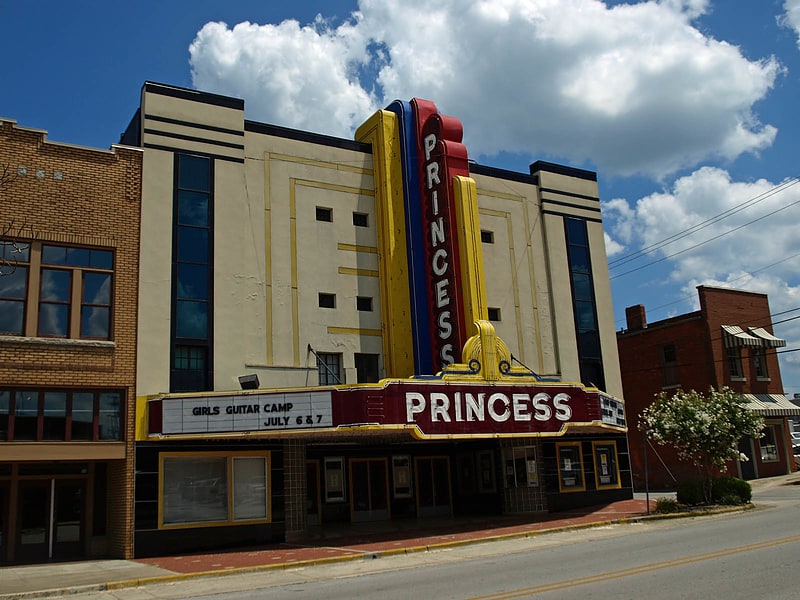
Playhouse in Decatur, Alabama. The Princess Theatre is a 677-seat performing arts venue in Decatur, Alabama. The art deco-style building was originally built in 1887 as a livery stable. In 1919, the building was transformed into a silent film and vaudeville playhouse.
In 1941 the Princess received its art deco redesign. A bright neon marque which displays the name was installed around the same time. Local architect Albert Frahn painted the interior in burgundy and gray, with glow-in-the-dark murals. Outside the doors, the floor is paved with terrazzo in a map of Alabama, that marks the Tennessee River and City of Decatur.
In 1978, the city of Decatur purchased The Princess after it closed as a movie house. The city gave the theatre a $750,000 renovation, and the stage was again open as the premier performing arts venue for the Decatur area. The building was listed on the Alabama Register of Landmarks and Heritage in 1981.[1]
Address: Decatur, 112 Second Avenue NE
Norfolk Southern Tennessee River Bridge
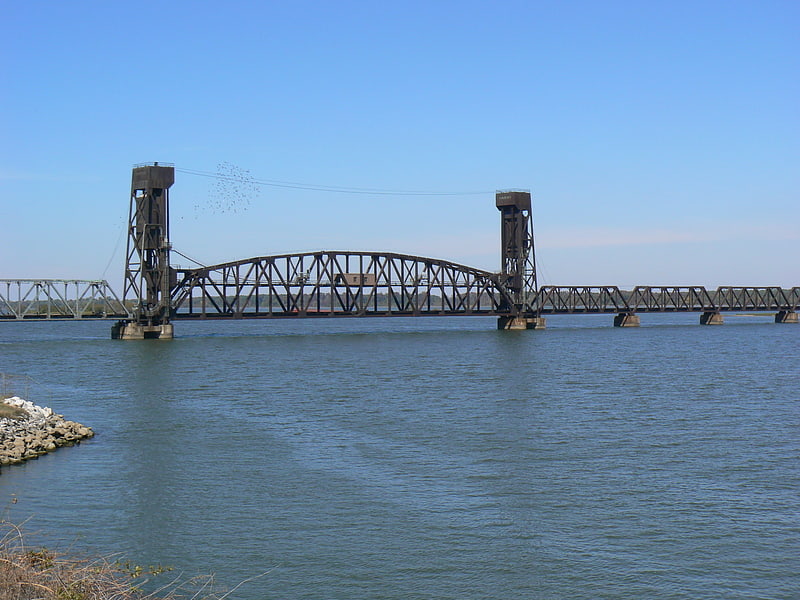
Lift bridge in Decatur, Alabama. The Norfolk Southern Tennessee River Bridge is a lift bridge operated by the Norfolk Southern Railway over the Tennessee River at Decatur in the north central part of Alabama in the United States. While it is owned and operated by Norfolk Southern, the majority of the railroad traffic over the bridge is from another company, CSX Transportation.
There has been a railroad bridge or ferry at this location since the late 1850s. The bridge is on the Norfolk Southern mainline between Sheffield, Alabama and Chattanooga, Tennessee and the CSXT mainline between Birmingham, Alabama and Nashville, Tennessee (S&NA North Subdivision).
This bridge also serves as a vital link between North Alabama and Greater Birmingham/Central Alabama. The Port of Decatur, which serves as an intramodal terminal for many industries in the region, benefits from the bridge's important location inside Decatur.[2]
Celebration Arena
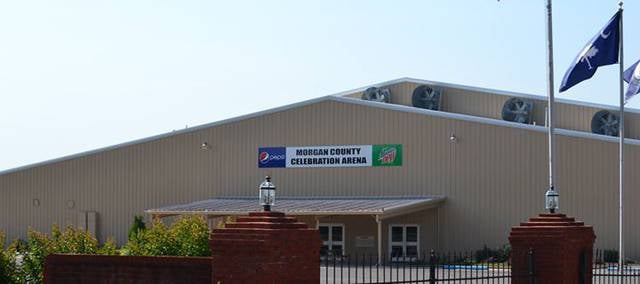
Arena in Morgan County, Alabama. The Celebration Arena is a 5,000-seat indoor arena located in Priceville, Alabama, near Decatur. It contains a 150-by-300-foot arena floor that can be used not only for sporting events as well as rodeos and horse shows, but also for trade shows, flea markets, and other special events, such as concerts.
For a time this arena was the only structure in Alabama that contained a full indoor track. It was formerly the site of the Alabama High School Athletic Association State Indoor Track Meet. Concerns over the facility's safety led to the cancellation of the AHSAA Indoor Track season for 2007-2008. Celebration Arena ended its role as the state's indoor track facility and in 2012 a new indoor track facility was opened adjacent to the Bill Harris Arena at the Alabama State Fairgrounds in Birmingham.
In 2009, Celebration Arena was purchased by the State Products Mart of Morgan County and was eventually upgraded with facilities for its current emphasis on horse-related events.[3]
Address: 67 Horse Center Rd, 35603-6522 Decatur
Delano Park
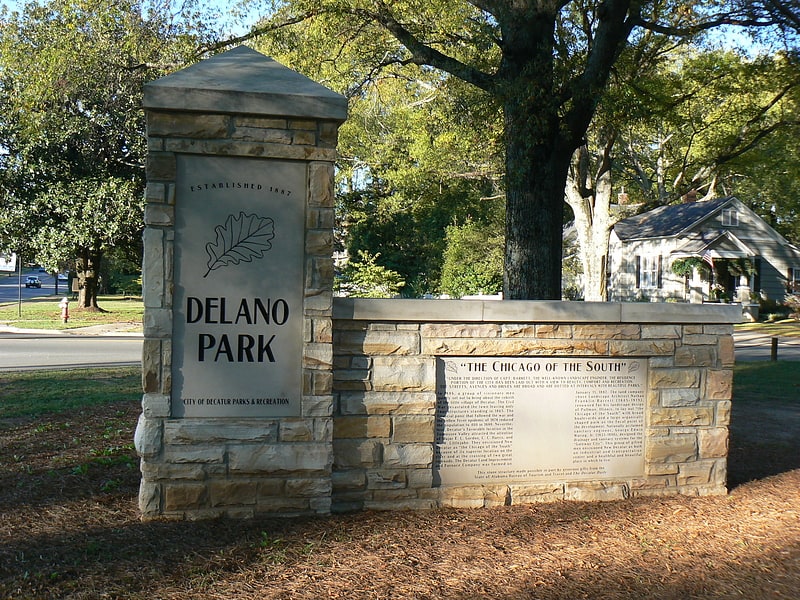
Recreation center in Decatur, Alabama. The Delano Park, operated by the Decatur Parks and Recreation Board, is the oldest park in the city of Decatur, Alabama.
It was created in 1887, as part of a master plan to "re-invent" the City of Decatur, then New Decatur. The city created the "Decatur Land Improvement and Furnace Company" for this specific purpose. The company employed a landscape architect by the name of Nathan Franklin Barrett to design a whole new city that had been ravaged by a yellow fever epidemic and the Civil War. The park was designed to be the focal point of the entire plan.
The park, named after President Franklin Delano Roosevelt, was dedicated in the 1930s by Roosevelt himself and later named in his honor as part of a newspaper contest, which sought to commemorate his vision for municipal parks across America. The land was donated to the city of Albany as part of the New Deal, which included a large plan to develop the poverty-ridden city.
The park remained mostly a solitary attraction on the fringe of downtown as the only large park in town during that era. This changed in the mid-1950s when the new Decatur High School constructed a new school building to replace an overcrowding "Riverside" High School building.
The far eastern end once consisted of a swimming pool called the "Blue Haven". This pool has since been filled in, and the Decatur High marching band now uses a practice field that was created over the former swimming area.
The middle portion of the park contains a children's playground, the new "Splash Pad", and a ditch with a concrete bridge donated to the park. The bridge was moved in the 1930s from Ferry Street to accentuate the beauty of the park and has been a favorite location for young and old alike ever since.[4]
Old State Bank
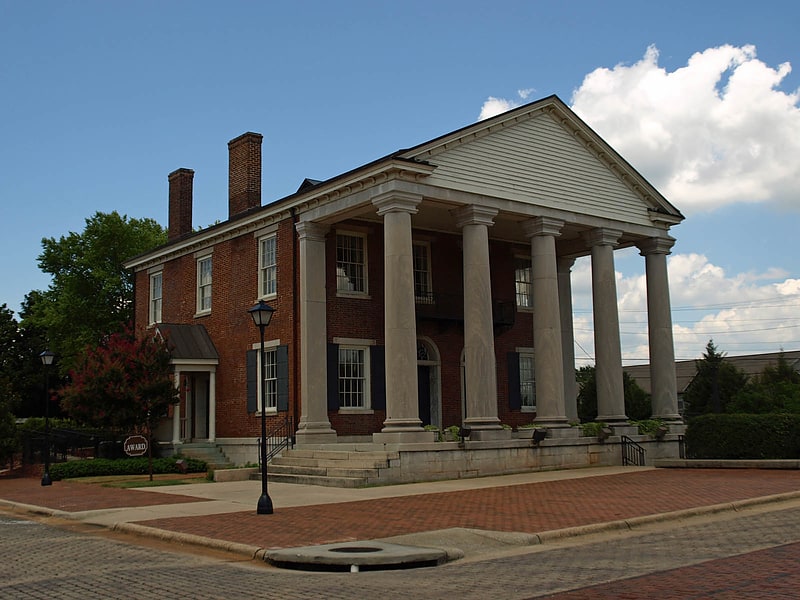
Building in Decatur, Alabama. The State Bank Building, Decatur Branch, commonly known as the Old State Bank, is a historic Jeffersonian-style bank building in Decatur, Alabama, United States. It was recorded by the Historic American Buildings Survey in 1934 and 1935. It was added to the National Register of Historic Places on March 24, 1972, due to its architectural significance.[5]
Address: 925 Bank Street NE, Decatur
Captain William J. Hudson "Steamboat Bill" Memorial Bridges
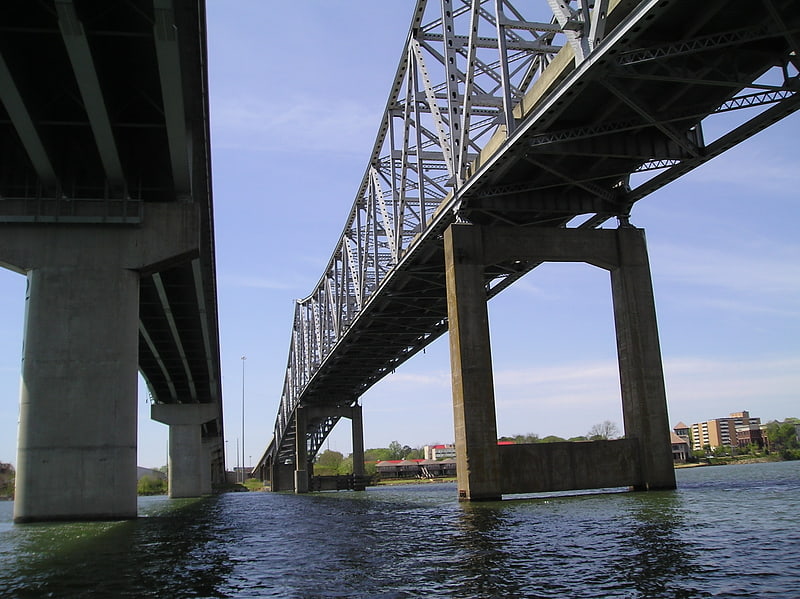
The "Steamboat Bill" Memorial Bridges are two bridges that span one of the widest points along the Tennessee River within the city of Decatur, Alabama, between Morgan County, and Limestone County. One is a cantilever truss, and the other is a reinforced concrete. The bridges carry US 31, US 72A, and State Route 20 from the intersection of Wilson Street, and 6th Avenue in Northeast Decatur.[6]
Cotaco Opera House
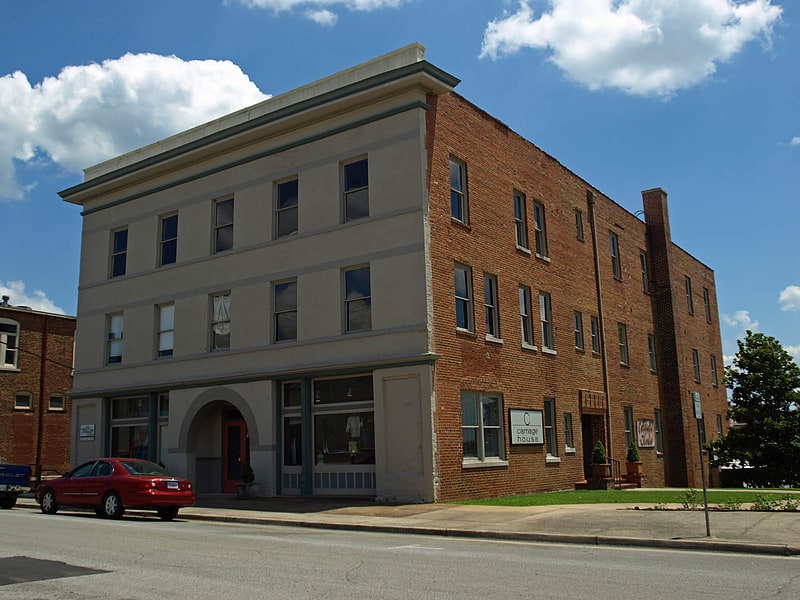
Theater in Decatur, Alabama. The Cotaco Opera House, also known as Masonic Building, was the first opera house constructed in the state of Alabama. It is located at 115 Johnston Street in historic downtown Decatur, Alabama.
In 1889, the city of Decatur was the largest city in North Alabama, out-sizing Huntsville. It had become increasingly apparent that the city was in need of a theater to showcase its fine arts. The Opera House was built on a 100 by 140 foot site that ran south from Johnston Street and fronting on the east side of 1st Avenue. It was built by the Cotaco Opera House Company, which was incorporated on September 16, 1889.[7]
Port of Decatur
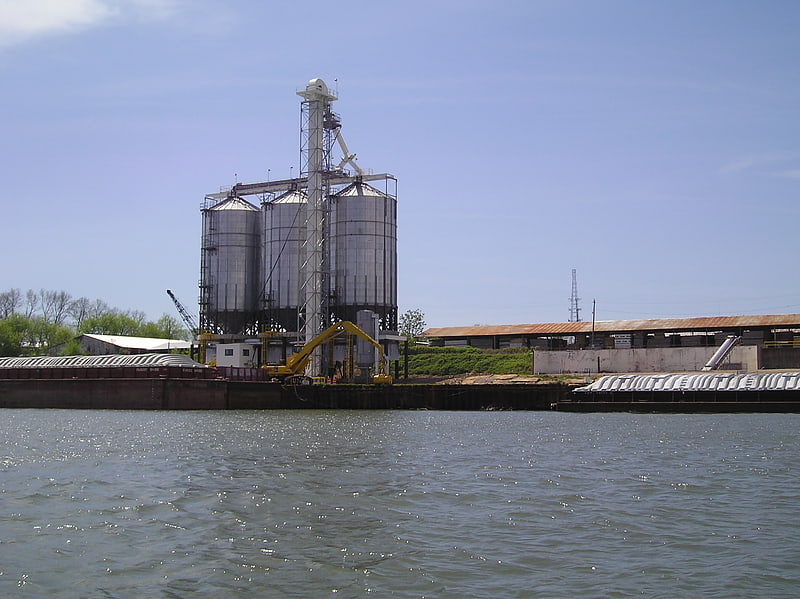
The Port of Decatur is a transshipment port on the Tennessee River, in the city of Decatur, Alabama, United States of America. The port was founded in 1971.[8]
Bank Street–Old Decatur Historic District
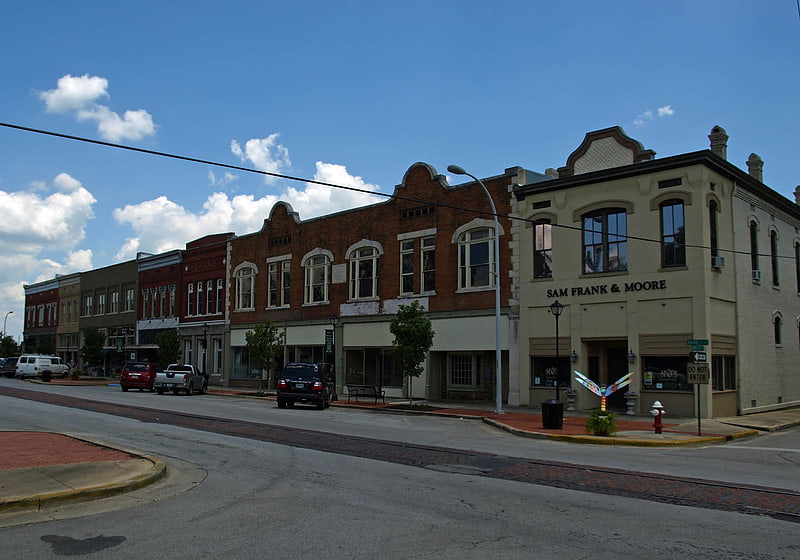
The Bank Street–Old Decatur Historic District is a historic district in Decatur, Alabama. The district encompasses the original commercial and residential portion of Decatur along the Tennessee River. In 1832, Decatur was selected over the larger Huntsville as the site of the northern branch of the state bank. Bank Street became the commercial hub of the town, as it was the only place in the Tennessee Valley were riverboat, wagon, and rail transportation converged. Due to its strategic location, the town suffered heavy damage in the Civil War; the Todd House on Lafayette Street is one of only four buildings in Decatur to survive the war. As the town was rebuilding from the war, a fire in 1877 destroyed most of the buildings along Bank Street. The rebuilt structures were all of brick, and represent Italianate, Victorian, and Commercial styles popular from the late 19th to the early 20th centuries. Houses in the district are primarily modest, and styles include vernacular Victorian, Shingle-style, and Craftsman bungalows.
The portion along Bank Street was listed on the National Register of Historic Places in 1980, while the remainder, including all of the residential portion, was added to the district in 1985.[9]
Dancy–Polk House

Building in Decatur, Alabama. The Dancy–Polk House is a historic residence in Decatur, Alabama. The house was built in 1829 for Colonel William Francis Dancy, an early settler in the area, who later moved to Franklin, LA. It is the oldest building in Decatur, and one of only four to survive the Civil War. Dancy came to North Alabama from southern Virginia, and built a Georgian house popular in his homeland. The two-story frame house has a double-height portico with four Doric columns on each level. The house was listed on the Alabama Register of Landmarks and Heritage in 1978 and the National Register of Historic Places in 1980.[10]
New Decatur–Albany Historic District
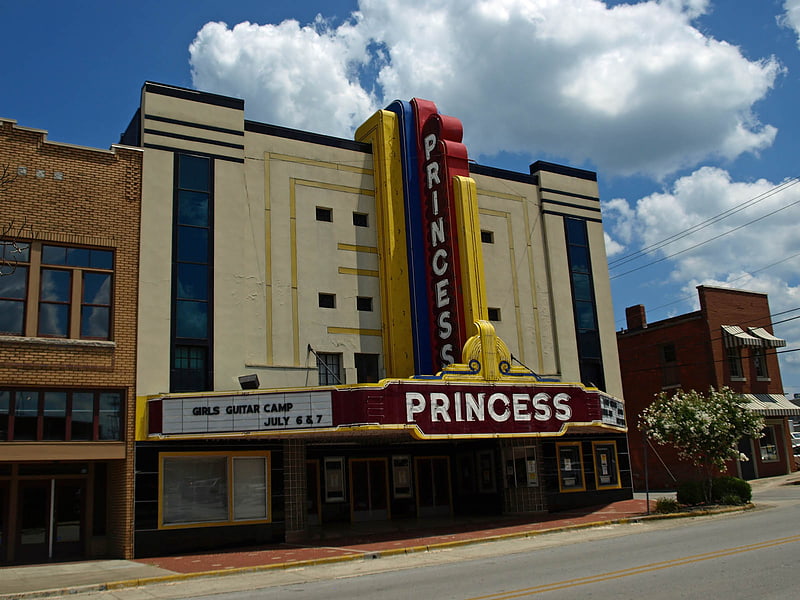
The New Decatur–Albany Historic District is a historic district in Decatur, Alabama. The district encompasses the commercial district of the former town of New Decatur. It lies south of the Bank Street-Old Decatur Historic District and east of the New Decatur–Albany Residential Historic District. New Decatur was founded in 1887 as a planned town and suburb of Decatur. The town was renamed Albany in 1916 and merged with "Old" Decatur in 1927.
The district contains 48 buildings centered on 2nd Avenue. Buildings from the late 19th century exhibit more decorated styles, including examples of Romanesque Revival, Victorian, and Renaissance Revival architecture. Early 20th century structures are more restrained, with decoration coming from the building's materials rather than being applied. A few Art Deco and Streamline Moderne buildings dating from the 1920s to 1940s also appear in the district. Notable contributing properties include the Princess Theatre, an Art Deco cinema-turned-theater, and the Cotaco Opera House, built in 1890.
The district was listed on the National Register of Historic Places in 1995. The Decatur Light, Power, and Fuel Company complex was added to the district in 1999, but subsequently demolished.[11]